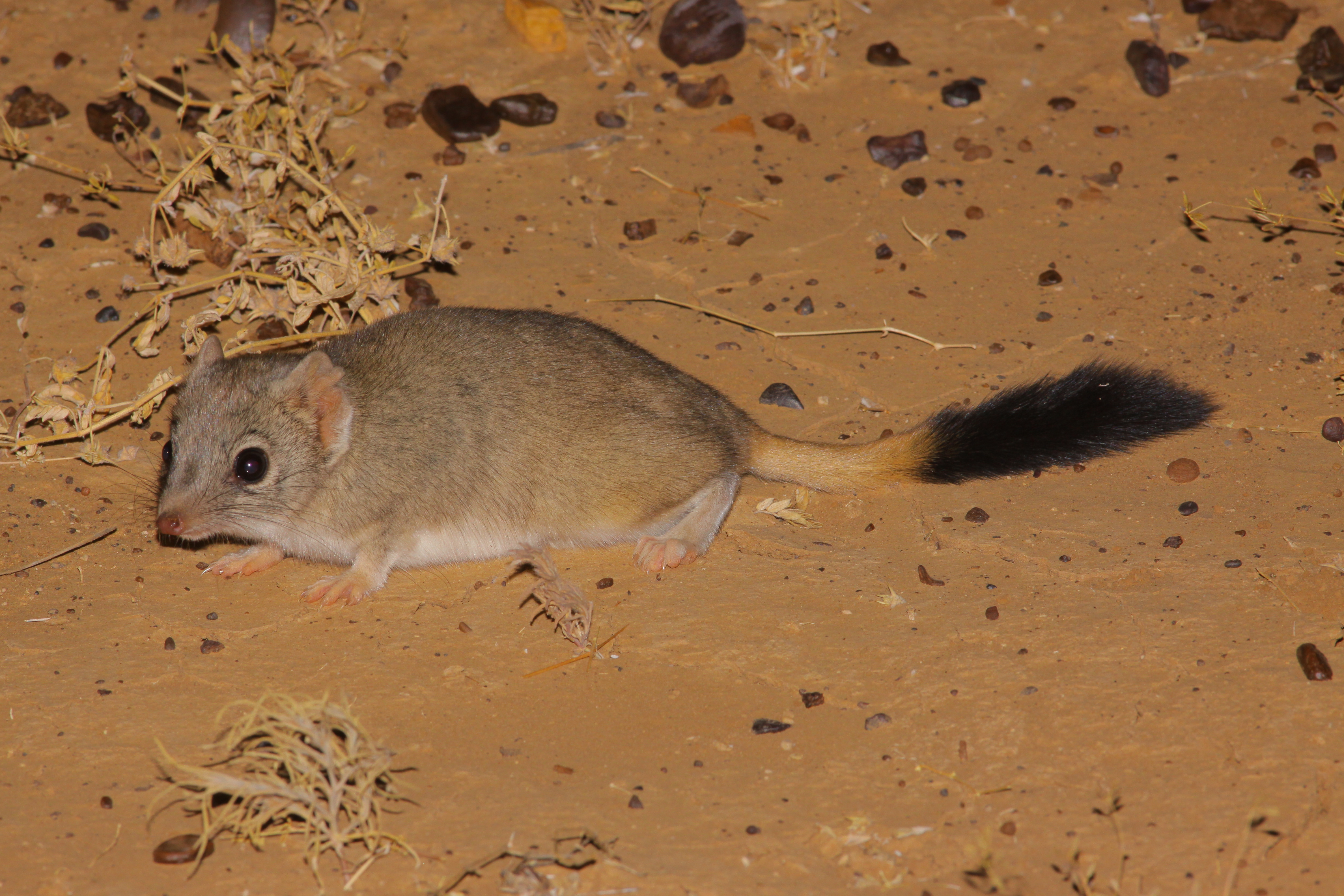Kowari
Helping the kowari, a tiny, inquisitive marsupial, survive
The kowari is an inquisitive carnivorous marsupial living in western Queensland, where habitat loss and degradation threaten its survival in the wild.

Fast facts
Common name: Kowari
Scientific name: Dasyuroides byrnei
Family: Dasyuridae (dasyurids)
Status: Endangered Habitat: Sparsely vegetated gibber (stony) and clayey plains with 20% or less stone cover
Species overview
The kowari is a small, nocturnal predator that lives in the arid regions of south-west Queensland and north-east South Australia.
Kowaris live on the lands of numerous First Nations groups. We are still gathering knowledge about the kowari’s cultural significance, ecology and behaviour that may benefit the conservation of the species.
Records suggest that the species was once more widespread across the desert region of central Australia, but now they’re restricted to small refuges.
Kowaris are inquisitive but can be very difficult to find in the landscape and even harder to film in the wild because they move quickly and rarely sit still.
Despite numerous searches, kowaris have disappeared from long-term study sites in Diamantina National Park and have not been seen there since 2012. Fortunately, in the nearby Astrebla Downs National Park, kowaris are still present.
Ecology and behaviour
Also known as the brush-tailed or bushy-tailed marsupial rat, kowaris are opportunistic predators, eating insects and small vertebrates (particularly rodents), . They are well adapted to life in arid regions and do not need to drink, deriving moisture from their food.
They are known for their ‘ style of running across the landscape and their great speed.
Kowaris are typically solitary animals, except during the breeding season from April to December. They live in small burrows, where they can raise up to 6 young that spend their first 3 months in their mother’s pouch.
While kowaris are nocturnal, they do bask in the sun around their burrow entrances during cooler weather.
Kowaris live about 1–2 years in the wild but can survive for longer in captivity.
Characteristics
The kowari has:
- large upright ears
- a pointed muzzle
- pale eye rings
- a light-grey coat
- a distinctive dense black brush at the end of its tail
- a weight of up to 175g (males) and 140g (females)
- a maximum length of 34cm.
Threats
- Feral predators, such as feral cats, wild dogs, foxes and dingoes
- Barn owls and other native predators
- Habitat loss and degradation due to overgrazing.
What’s being done?
- We are part of the kowari recovery team, which was established after the species was listed as endangered in 2023. The team is currently considering how to support the kowari’s recovery.
- In western Queensland, we manage a threatened species monitoring program that includes the kowari, greater bilby and plains wanderer.
- For more than 10 years, park rangers have been working to reduce feral cat and wild dog numbers in the Diamantina and Astrebla Downs National Parks and have removed more than 3,400 feral cats.
- Queensland’s national parks and protected areas play an important role in protecting threatened species. As part of the Queensland Protected Area Strategy 2020–2030, we’re acquiring more land to expand our protected area system and help conserve critical species habitat.
Who is helping?
- Australian Wildlife Conservancy (AWC) and the North Australian Pastoral Company (NAPCo)
These organisations work in partnership on the Coorabulka and Monkira Stations in western Queensland to assess the conservation values of the cattle properties. They are conducting biodiversity surveys to confirm the presence of threatened species, such as the kowari and the plains wanderer. A key focus is establishing threshold levels of grazing that can also support healthy and sustainable kowari populations.
AWC has received Queensland Government grant funding to establish 60 monitoring stations across Coorabulka Station to search for kowaris, greater bilbies and plains-wanderers. Each station includes a solar bio-acoustic recorder and a Reconyx camera, capable of recording data up to 24 hours a day over 12 months.
How you can help
- Support conservation groups like AWC working to help the species in Queensland.
- Make a donation to support Queensland threatened species protection and science and research-based initiatives.
- Find out more about how you can help support threatened species efforts.